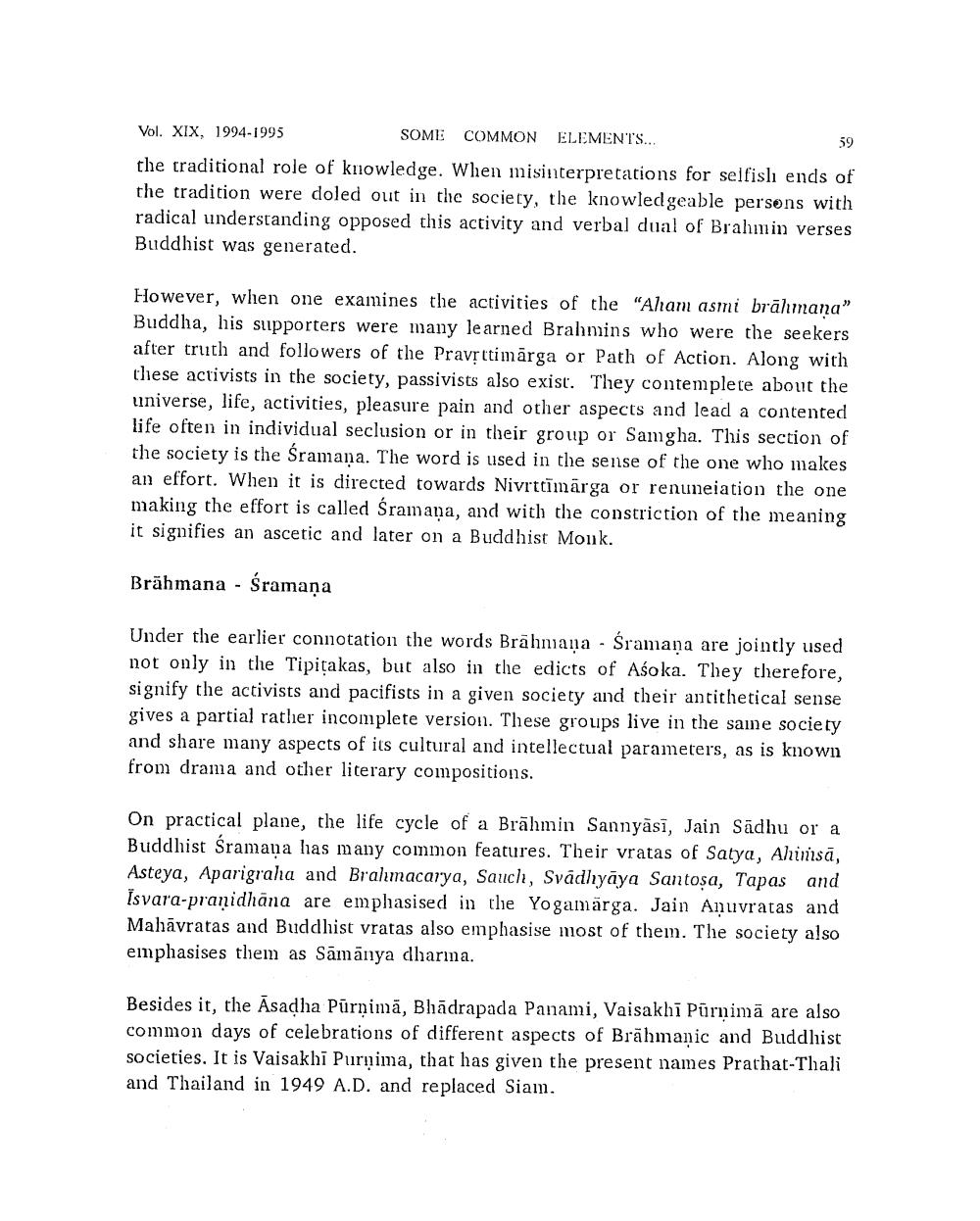________________
Vol. XIX, 1994-1995
SOME COMMON ELEMENTS... the traditional role of knowledge. When misinterpretations for selfislı ends of the tradition were doled out in the society, the knowledgeable persons with radical understanding opposed this activity and verbal dual of Brahmin verses Buddhist was generated.
However, when one examines the activities of the "Aham asmi brāhmana” Buddha, his supporters were many learned Brahmins who were the seekers after truth and followers of the Pravșttimärga or Path of Action. Along with these activists in the society, passivists also exist. They contemplete about the universe, life, activities, pleasure pain and other aspects and lead a contented life often in individual seclusion or in their group or Samgha. This section of the society is the śramana. The word is used in the sense of the one who makes an effort. When it is directed towards Nivrttīmärga or renuneiation the one making the effort is called śramaņa, and with the constriction of the meaning it signifies an ascetic and later on a Buddhist Monk.
Brāhmana - Sramaņa
Under the earlier connotation the words Brāhniana - Śramaņa are jointly used not only in the Tipitakas, but also in the edicts of Asoka. They therefore, signify the activists and pacifists in a given society and their antithetical sense gives a partial rather incomplete version. These groups live in the same society and share many aspects of its cultural and intellectual parameters, as is known from drama and other literary compositions.
On practical plane, the life cycle of a Brāhmin Sannyāsī, Jain Sadhu or a Buddhist Sramana las many common features. Their vratas of Satya, Ahinsa, Asteya, Aparigraha and Bralımacarya, Sauchi, Svadhyāya Santosa, Tapas and Isvara-pranidhāna are emphasised in the Yogamärga. Jain Anuvratas and Mahāvratas and Buddhist vratas also emphasise most of them. The society also emphasises them as Sāmānya dharma.
Besides it, the Asadha Pūrnimā, Bhādrapada Panami, Vaisakhi Pūrņimā are also common days of celebrations of different aspects of Brähmanic and Buddhist societies. It is Vaisakhi Purnima, that has given the present names Prachat-Thali and Thailand in 1949 A.D. and replaced Siam.




